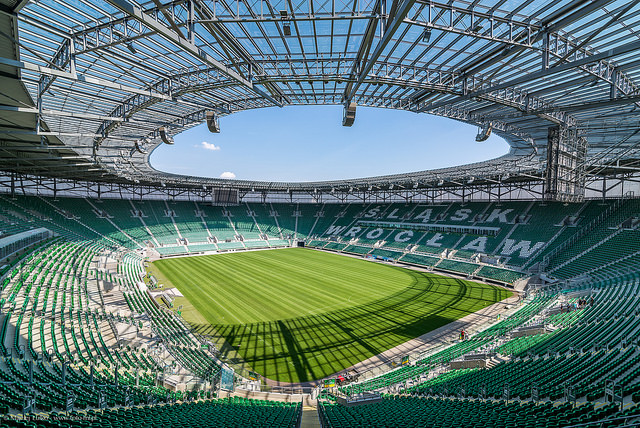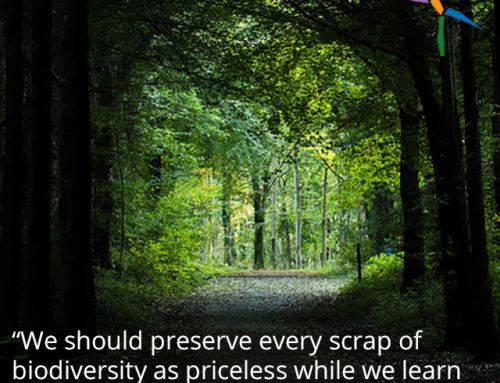In the past decade, an increasing number of sports stadiums and arenas have launched larger scale PR efforts to let the event-going public know in no uncertain terms that they’re making their venues and their daily practices much more green and eco-friendly. And those press releases made everybody who went to those stadiums feel better about going – except of course for the unconverted who neither read the press release nor have come around to thinking that green practices are a priority yet. But we know from experience that there can often be a gap between effective PR and the reality of a situation. So we decided to take a closer look at how green and eco-friendly stadiums are really making themselves.
First Things First, Nothing Is Selfless
In parts of this article, we’re going to give stadiums and arenas congratulations and “props” for the advances that they have secured in making their facilities more green and eco-friendly. But we don’t want you to entirely confuse that with the stadiums or arenas having hearts of gold (or green as it may be). There’s ultimately a number of benefits to reducing the carbon footprint of a large events center – and the primary one is profit. After the initial investment is done, most practices and policies that increase eco-efficiency also reduce long-term costs. Add this benefit to the better public perception that the stadium is doing good by increasing their green efforts and it’s actually surprising that more stadiums and event centers haven’t made these changes.
Who’s Leading the Pack?
The easiest way to figure out how powerful or not powerful the movement to make stadiums and arenas more eco-friendly is would be to look at the venues that are leading the pack in terms of eco-initiatives. You may not be surprised (though you will certainly be somewhat saddened) to know that there’s not a wealth of search responses to the query term “most eco-friendly stadium in the United States.” In fact, even globally you’ll find fewer than a handful of truly standout green stadiums. That’s somewhat of a testament to the power of PR which has led many of us to believe that stadiums are, with regularity, making bold moves to become more environmentally conscious.
It probably also will not surprise you that, by far, the most eco-friendly stadium in the United States is in the San Francisco bay area where people take sustainability extremely seriously. The $1.2 billion dollar Levi’s Stadium, home of the San Francisco Forty-Niners NFL team, is the first football stadium in the United States to achieve LEED Gold Certification. It includes a 27,000 square foot rooftop plant garden to control runoff, locally sourced park concessions in recycled packaging, on-site food composting, an emphasis on windows to create natural light within the stadium and is largely powered by solar panels that are housed on the three bridges that connect the parking lot to the stadium.
Also up for honorable mentions in the United States are STAPLES Center in Los Angeles (home of the LA Lakers) and MetLife Stadium (home of the New York Football Giants and New York Jets). STAPLES Center was the first U.S. sports complex to achieve ISO 14001 certification for its Environmental Management System. It generates five percent of its energy use per year through solar panels and conserves water with waterless urinals. MetLife Stadium was constructed using primarily recycled steel, and waste removal from the construction site afterward was primarily recyclable. In fact, even the seating was constructed from recycled plastic.
Philips Arena in Atlanta (home of the Atlanta Hawks) has achieve LEED certification for an existing facility and Nationals Park (home of the Washington Nationals) has also achieved LEED certification.
So, there are five! And while it’s true that other stadiums are working to increase how eco-friendly they are, none of them are at the front of the pack yet. That means that unless you’re headed to one of five sporting events, chances are there’s a big carbon footprint being left behind by your venue.
But There’s Good News!
The good news is that as new sports complexes are being built across the nation, they are being built with a reduced carbon footprint in mind. While we think that, often, new construction is unnecessary construction, we’ll take it if the materials are recycled from old sites and the new venue is better for the planet.
The other good news is that so much of the carbon footprint left at a sporting venue or arena is generated not by the arena itself but by the individuals attending the event. That means that small decisions you make yourself, like taking public transport to the event or being sure to recycle your concessions containers, can make a big impact if you can encourage others to do the same. And even if you can’t encourage others to do the same, you’ll know that you’re doing your part.
It’s incredibly hard to make any large scale venue eco-friendly, which is why it shouldn’t be entirely discouraging that very few of them are. In fact, what we’d want you to take away from this article is the preceding paragraph about the good news! Sports complexes are taking environmentalism more seriously and, as usual, a great deal of power resides with you, the postconsumer. Change can happen – and though it may be slowly but surely when it comes to sports complexes … it is!
Did we miss a thought or fact about eco-friendly stadiums that you want to share with us? If so, just tell us about it on one of the social media channels below.
Facebook | Twitter | Instagram | Tumblr | Pinterest | Google+





